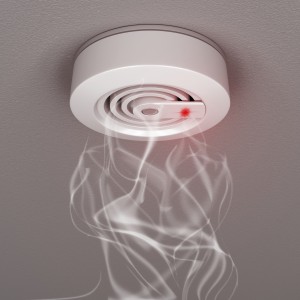CARBON MONOXIDE
Heating season is upon us and that brings seasonal danger from carbon monoxide poisoning.
Tasteless, colorless, odorless, carbon monoxide (CO) is produced by almost every fuel-burning appliance, including furnaces, water heaters, fireplaces, grills and gas space heaters. When the equipment is working right, very little CO escapes and what does gets vented harmlessly to the outside. When something goes wrong with the equipment or the venting, CO becomes one of America’s most deadly household hazards.
Here are some things every homeowner should know about CO and how to guard against it causing a tragedy. in your home.
- Headache, dizziness, nausea, weakness, sleepiness, and disorientation are all symptoms of CO poisoning, though a victim may not experience every one. Unfortunately, these same symptoms are associated with flu, food poisoning, and other afflictions, leading to many misdiagnoses. A cherry red face is a possible sign of CO poisoning.
- For healthy adults, CO becomes toxic when it reaches a level higher than 35 ppm (parts per million) with continuous exposure over an 8-hour period. This is the maximum exposure tolerated by OSHA.
Mild exposure over 2-3 hours (a CO level between 35 ppm and 200 ppm) will produce dizziness, drowsiness, and vomiting in as little as 1 hour. This level of exposure is deemed to be life threatening once three hours have passed. Extreme exposure (800 ppm and higher) will lead to unconsciousness, brain damage, and death in as little as a few minutes. Infants and people with heart conditions are more susceptible to CO poisoning than healthy adults. - If anyone in your home is experiencing CO poisoning symptoms, vacate the home immediately and notify your local fire or police department. Don’t just open doors and windows because that makes it hard for authorities to determine whether there is a CO problem when they inspect the home.
- Broken or blocked vents and flues are probably the most common cause of CO buildup. If you see any holes or disconnections, or rust stains indicating corrosion, call us immediately. Also be sure to put a guard on top of rooftop vents to prevent birds’ nests or other debris from falling into the chimney and blocking the escape of harmful gases.
- Carbon monoxide results form incomplete combustion. Call us to inspect any appliance that makes unusual noises. Many appliances have built-in safety components that prevent operation if an unsafe condition exists. So, if an appliance keeps shutting off, call us instead of turning it back on, especially if you experience any of the symptoms listed above.
- The best place to install CO detectors is outside of bedrooms where family members sleep. The greatest danger from CO occurs when people are asleep and unable to detect any of the symptoms. You want an alarm to sound where people will hear it. Installing a detector near a furnace, water heater, or other CO-emitting appliance will likely result in many false alarms.
Common CO Emission Sources
- Car running in garage
- Gas or wood fire in blocked chimney
- Cracked or corroded exhaust vent pipes
- Poorly installed
- gas appliances
- Cracked or leaking boiler or furnace heat section
- Grilling indoors or in garage
- Kerosene or gas heater
NEVER BLOCK VENTILATION DUCTS. SWEEP CHIMNEYS ATLEAST ONCE A YEA HAVE YOUR FUEL BURNING APPLIANCES SERVICED OR INSPECTED ANNUALLY.
ISS
S
- GET A CARBON MONOXIDE ALARM. THIS LIFE-SAVING DEVICE WILL SOUND WHEN IT DETECTS CO.
- NEVER BLOCK VENTILATION DUCTS. SWEEP CHIMNEYS AT LEAST ONCE A YEAR.
- HAVE YOUR FUEL BURNING APPLIANCES SERVICED OR INSPECTED ANNUALLY.
I
COMMON CO EMISSION SOURCES
ON SOURCES
BLOCK VENTILATION DUCTS. SWEEP CHIMNEYS AT LEAST ONCE A YEAR.


